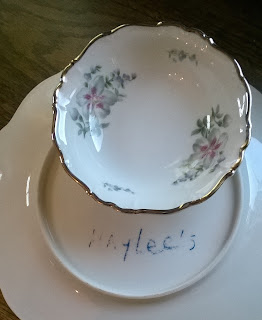Permanent Marker
By the time we get to a certain age or a certain amount of
life lived, we begin to accept that most things are not permanent—the dust-free
mantel, shorelines, relationships, our own lives. But permanent markers are
advertised to be, well, permanent. They
are not. I can scrub their marks off the
freezer boxes and refill the boxes with something new. Thanks to one of my
children, I have learned that you can even scrub them off a wall, though that
takes more effort.
When I was a teenager, my grandmother wrote my name in blue permanent
marker on the bottom of one of the dinner plates in her set of china, and
showed me. I had a hard time imagining a
time when I would need plates and bowls and coffee cups of my own or a time
when my grandmother wouldn’t need them herself, but my mom explained old people
sometimes want us to know what things of theirs will be ours when they die. I wasn’t ready for her to die, not then, and
not 25 years later, the day after my 40th birthday, when she did.
For several years I didn’t want the china. It didn’t feel
like mine, and when I thought about bringing it to my house I felt disrespectful.
How could I use my grandmother’s china without her? My parents patiently stored
it at their house, maybe wisely understanding that one day I would change my
mind or maybe not understanding at all but hoping I would take it.
And I did. Now, on the top shelves of my glass-fronted
dining room cabinets, I have a 12-piece set of very pretty bluish gray flowered
Bavarian china. We use it a few times a year, for holidays or celebrations with
friends. My name is on the bottom of one of the dinner plates, but the last few
times I’ve washed them I’ve noticed it’s starting to wear off. It makes me
wonder if I should write someone else’s name there now.



Comments
Post a Comment